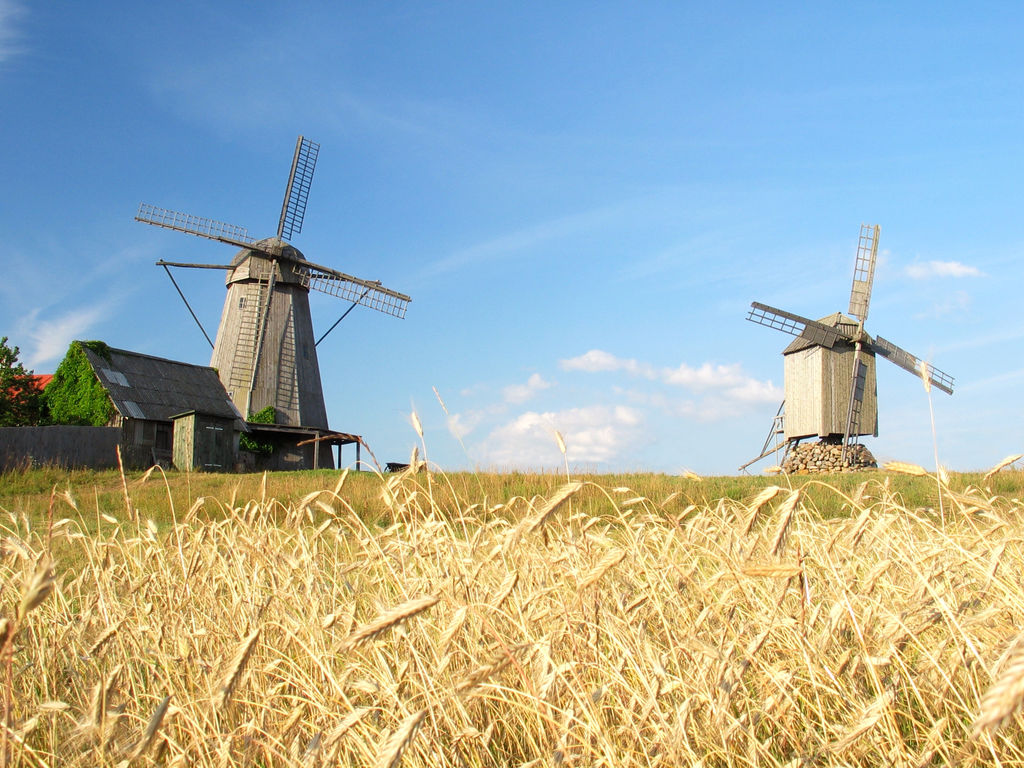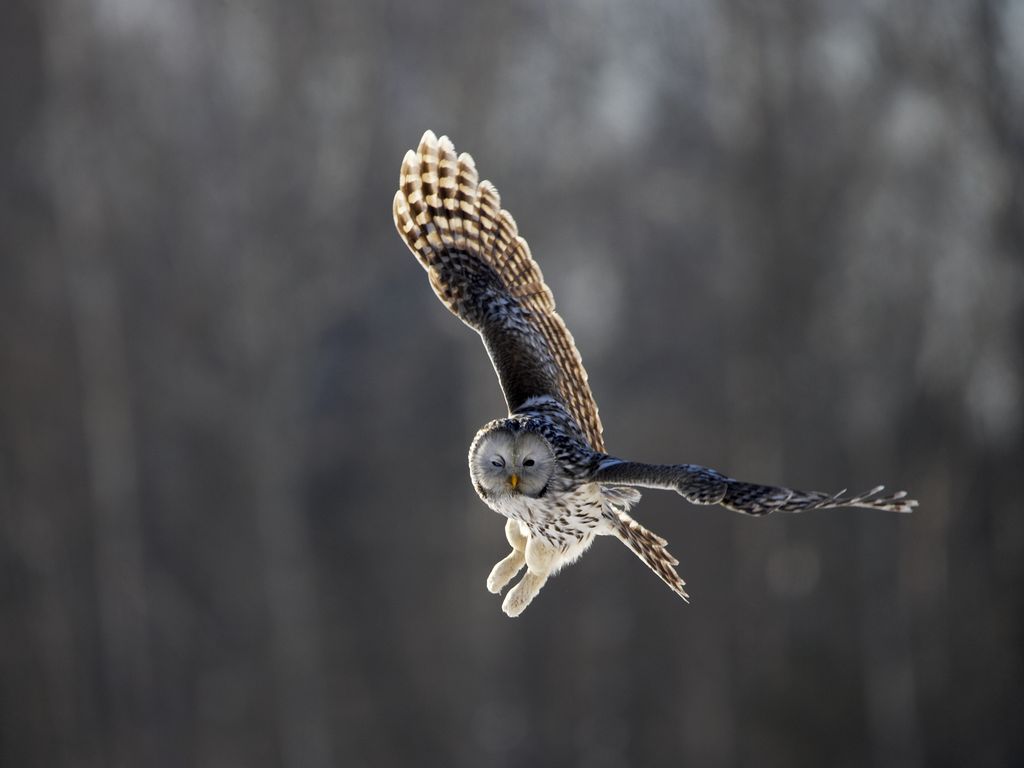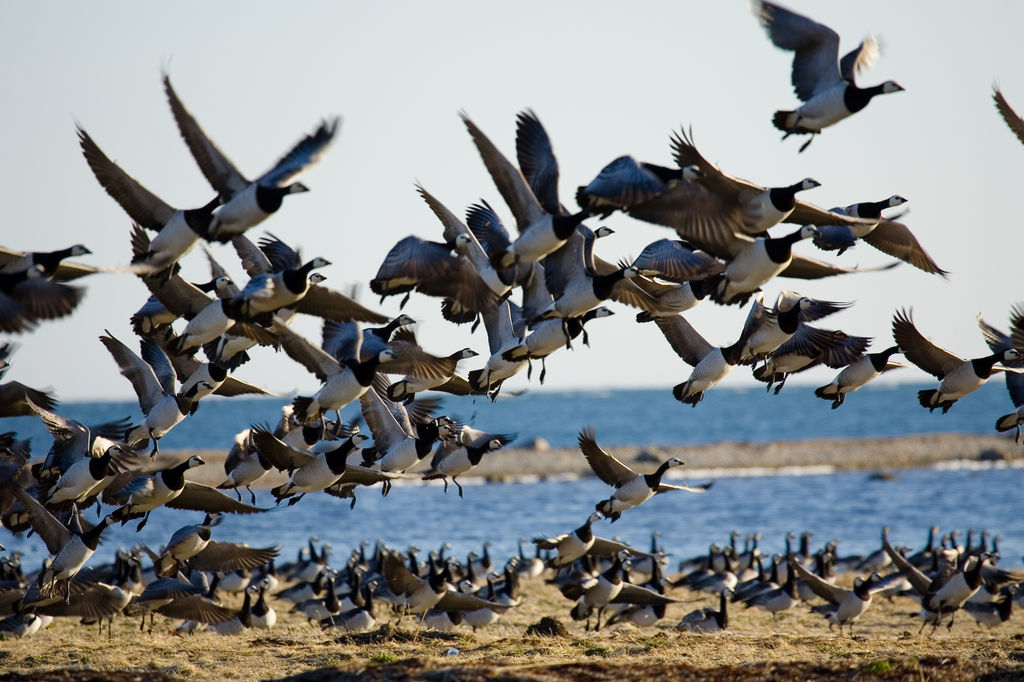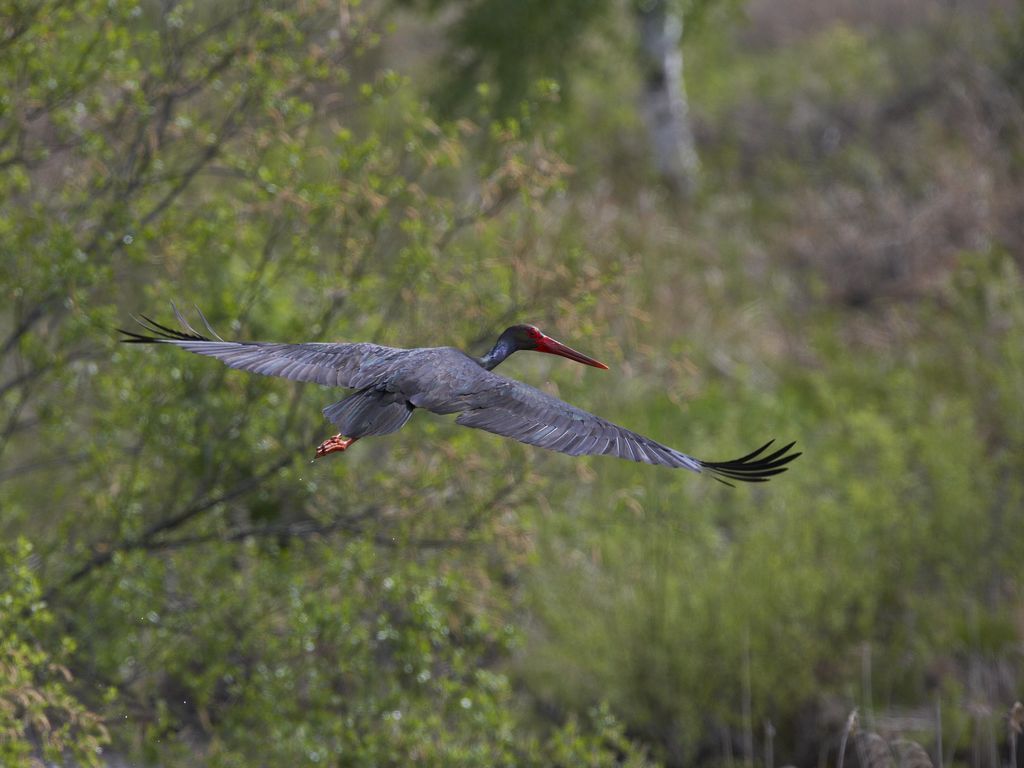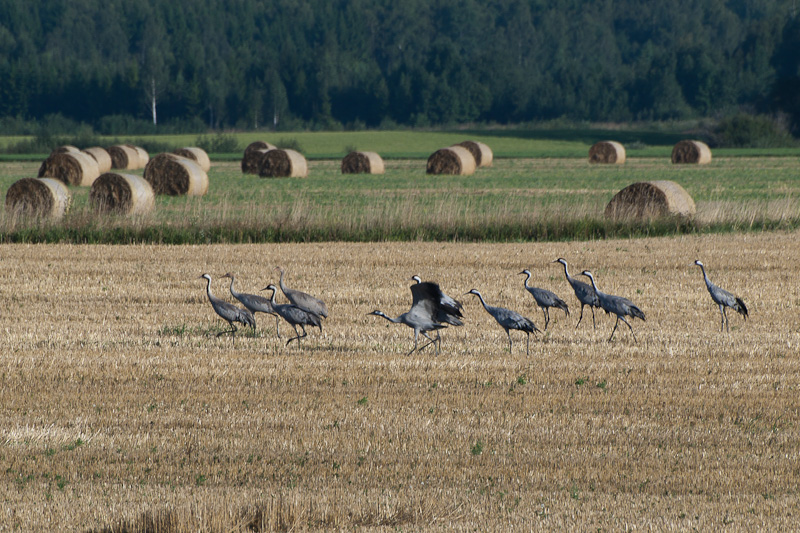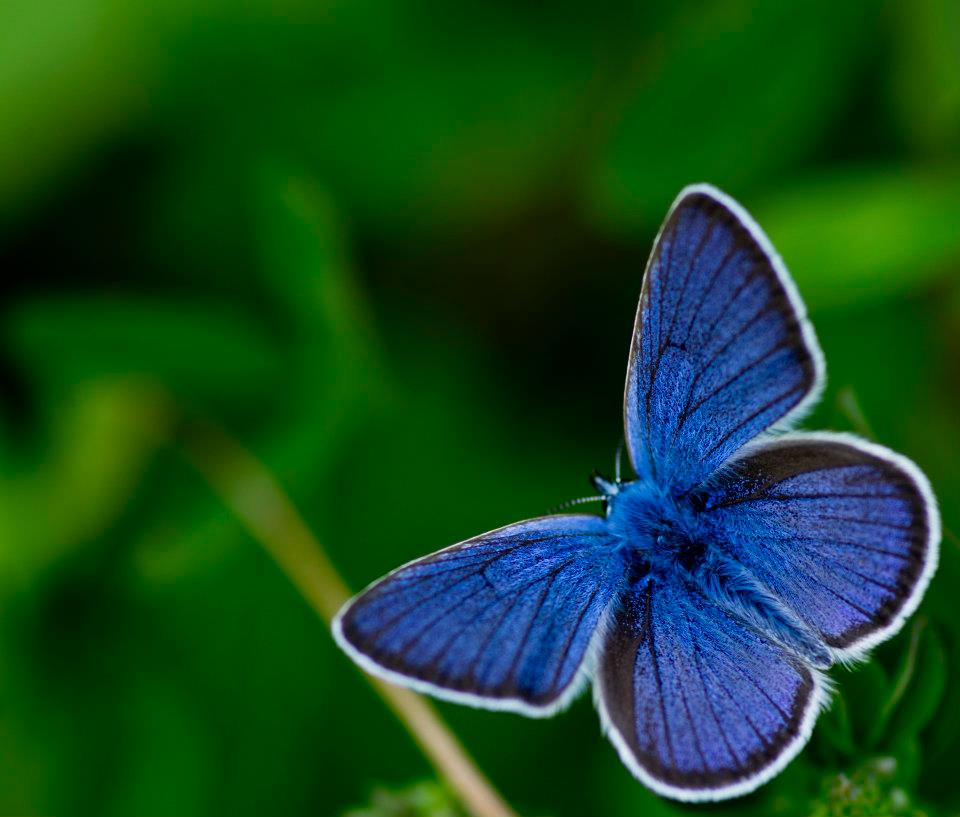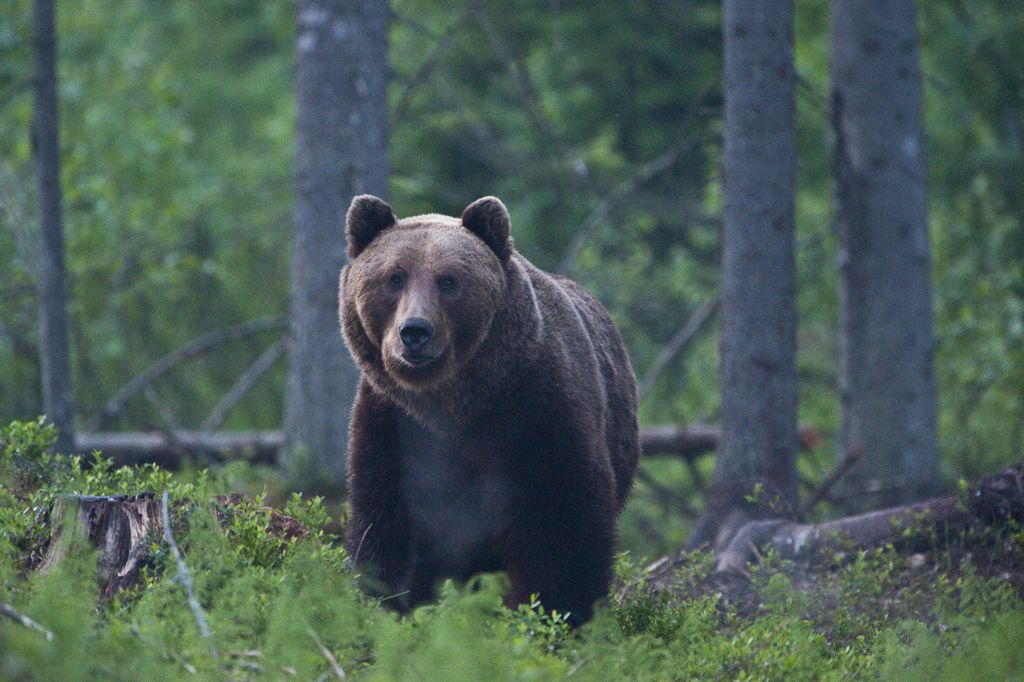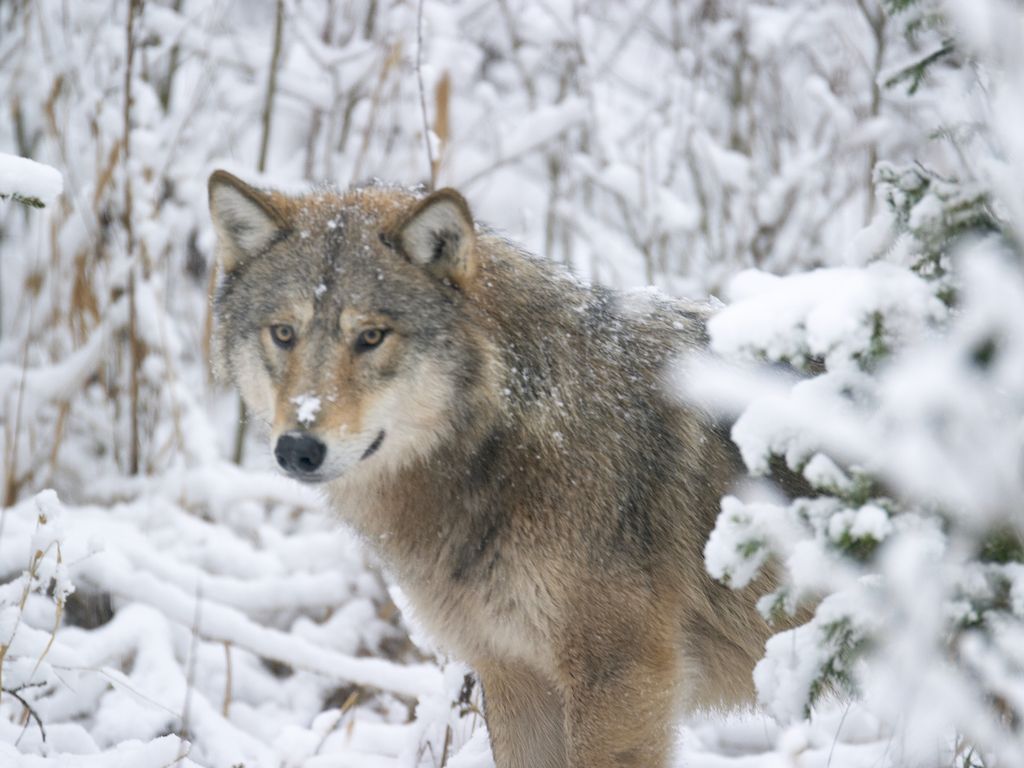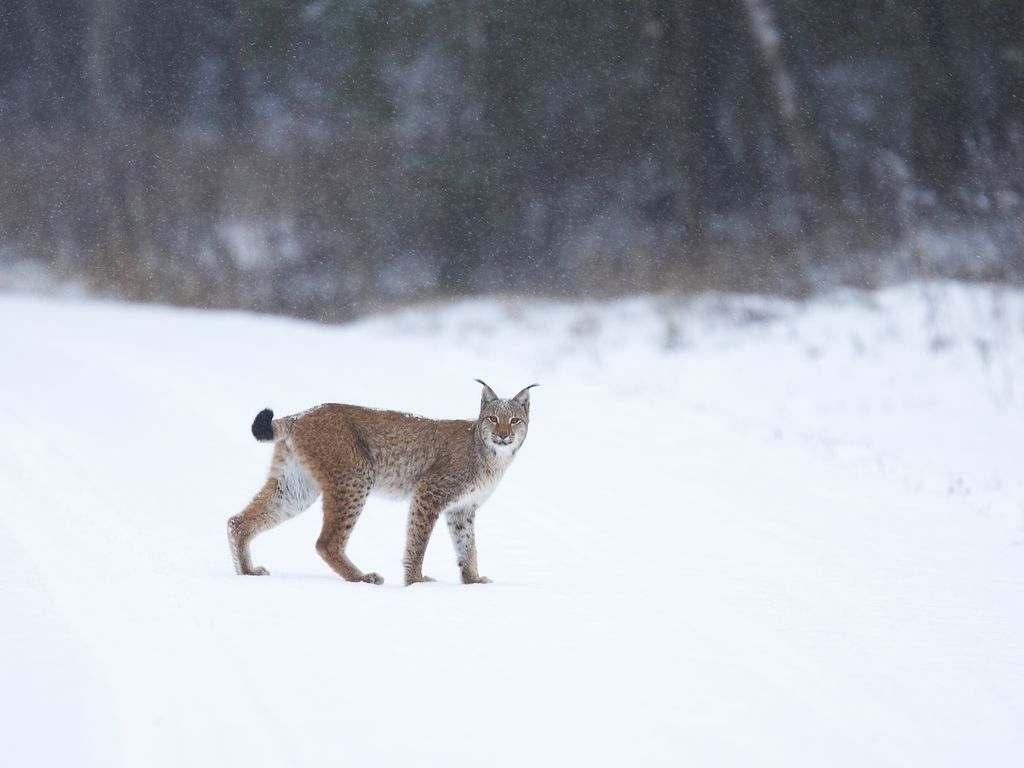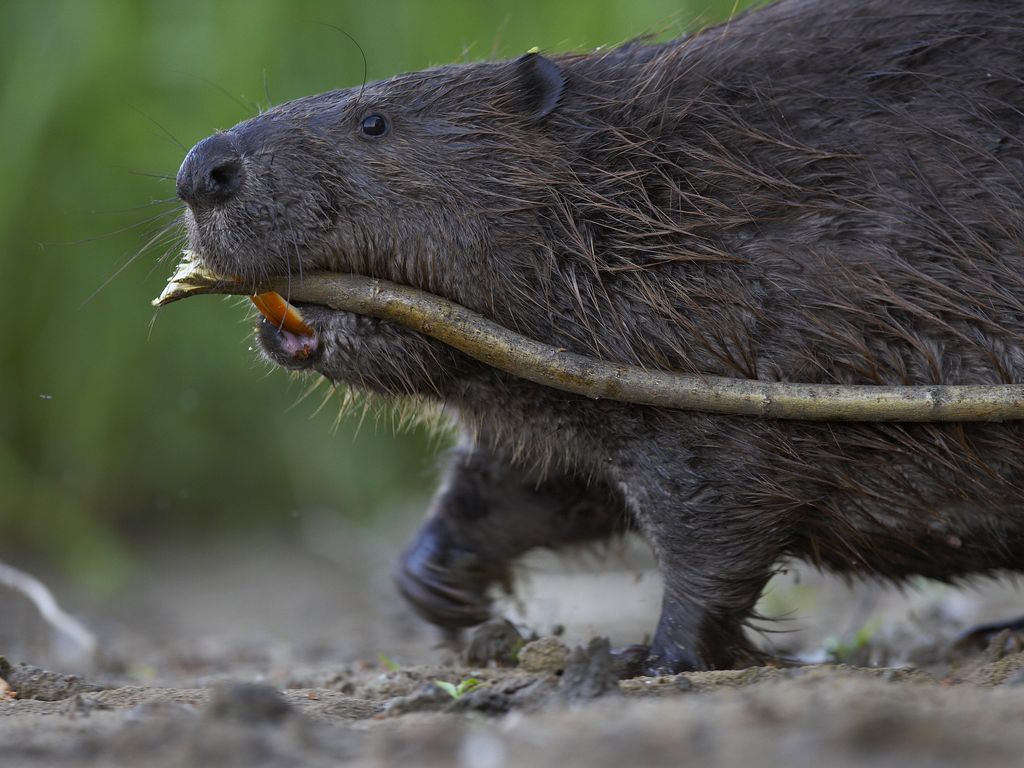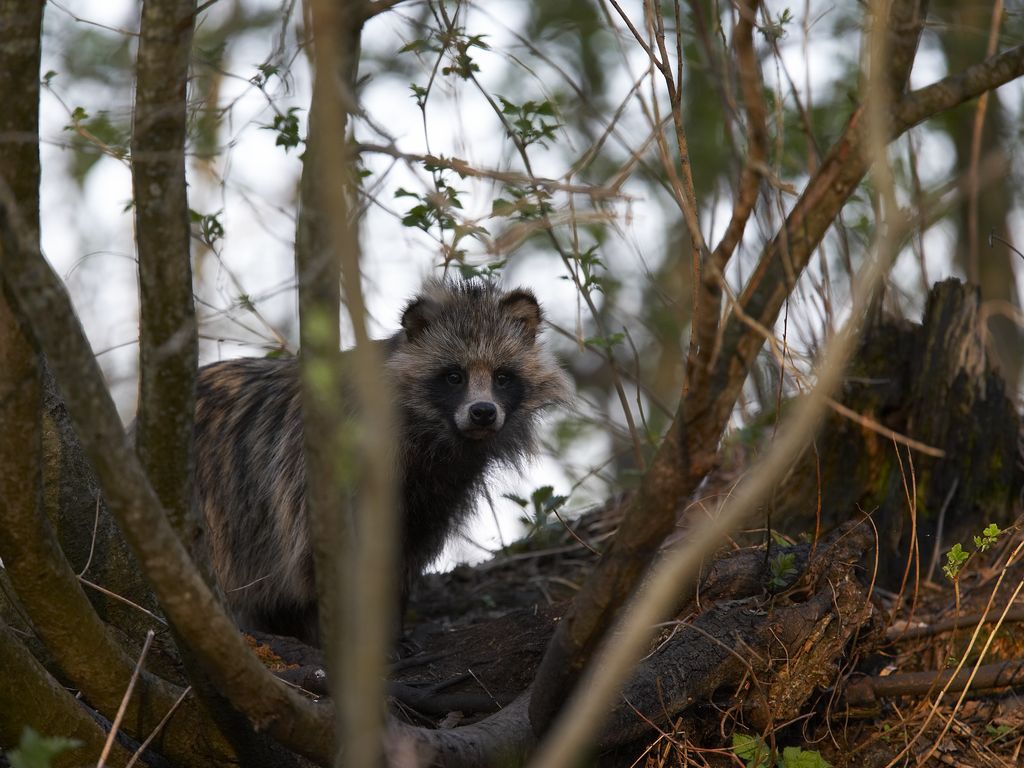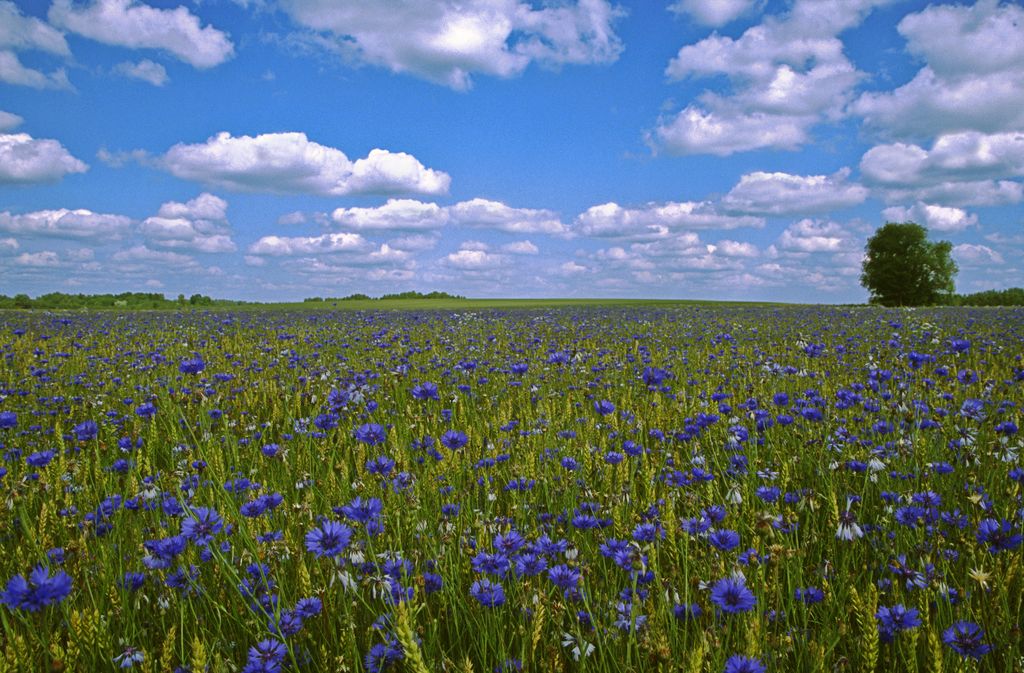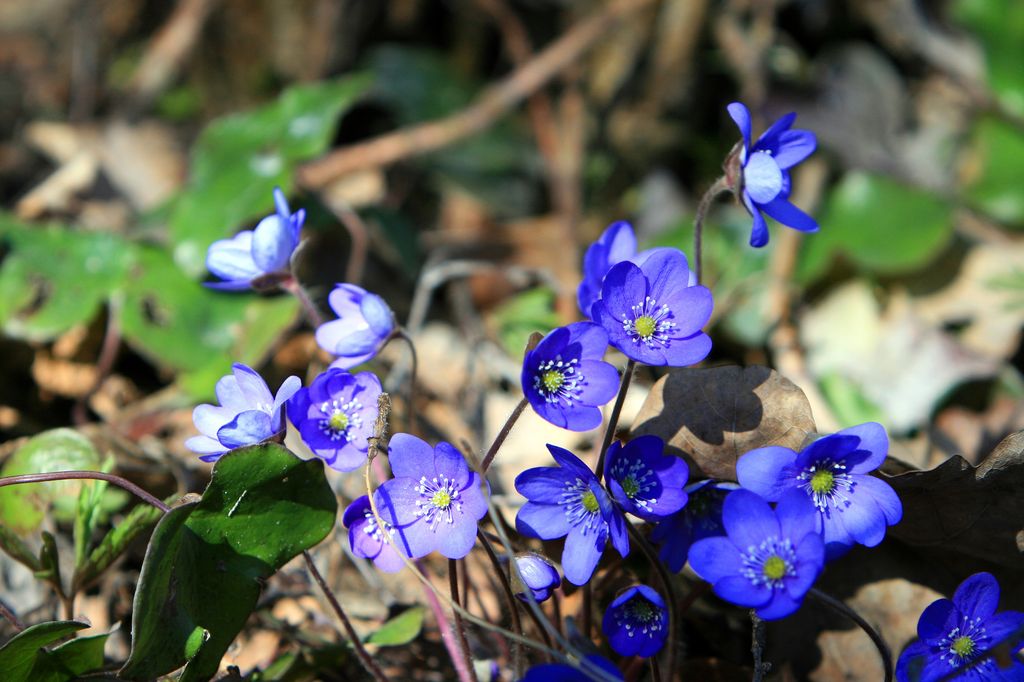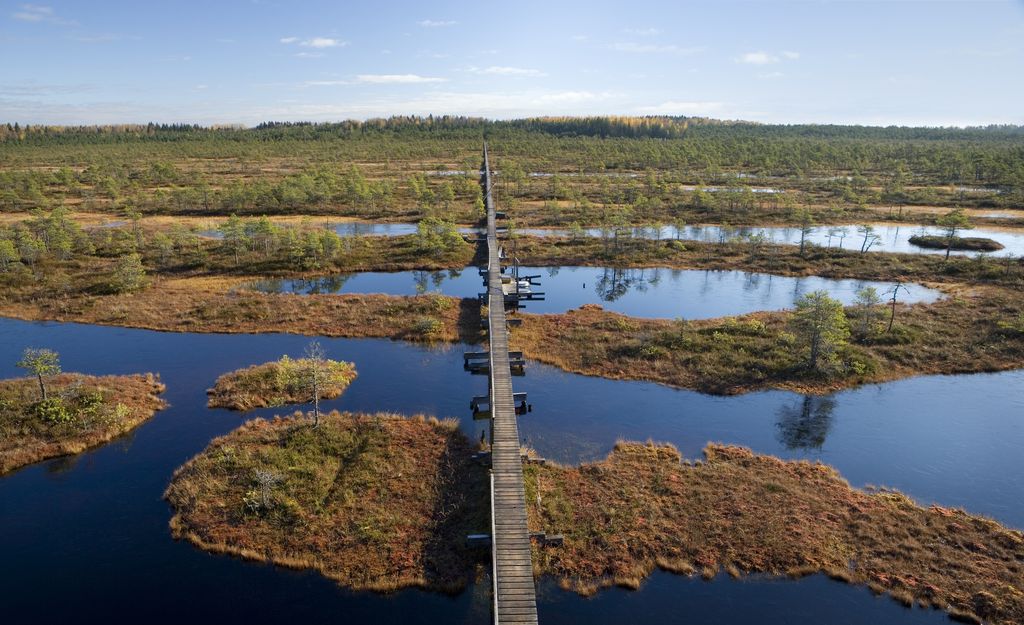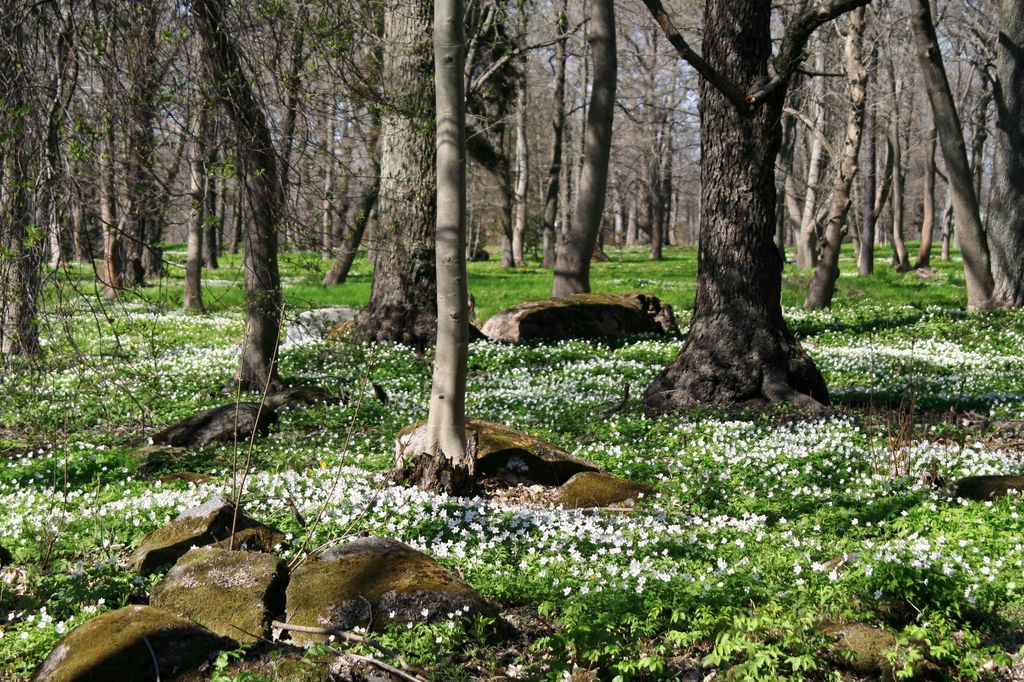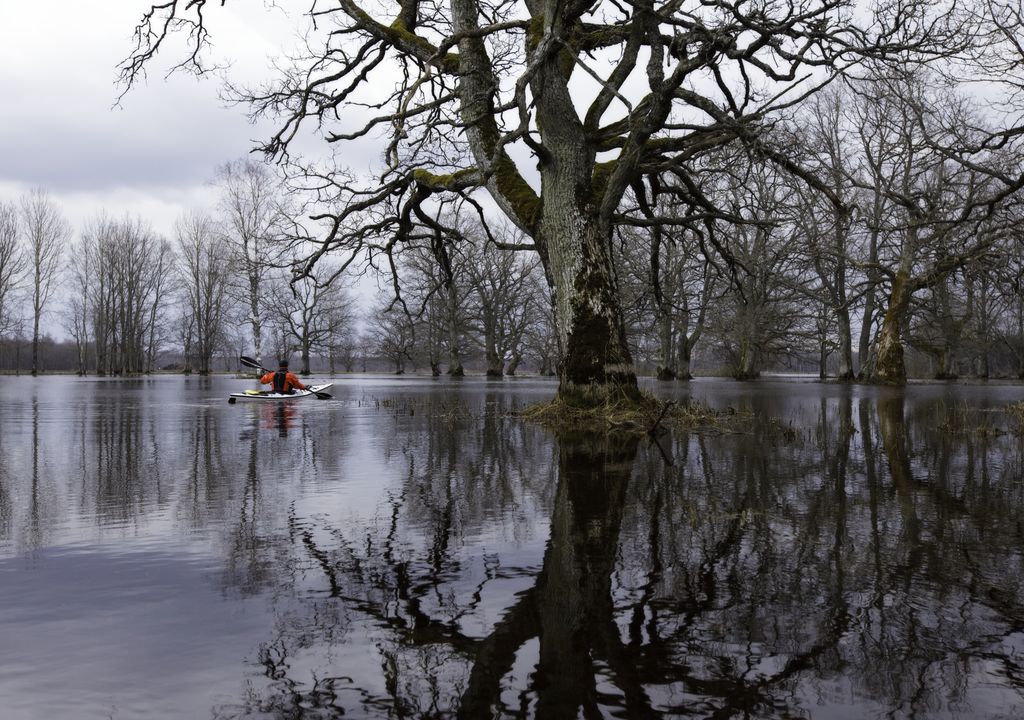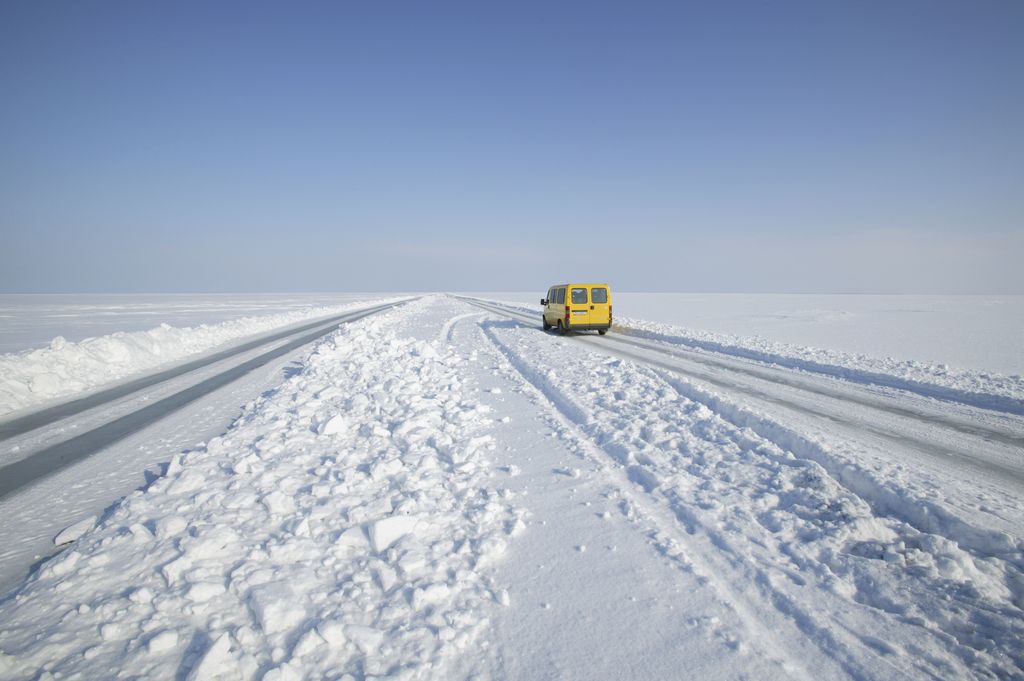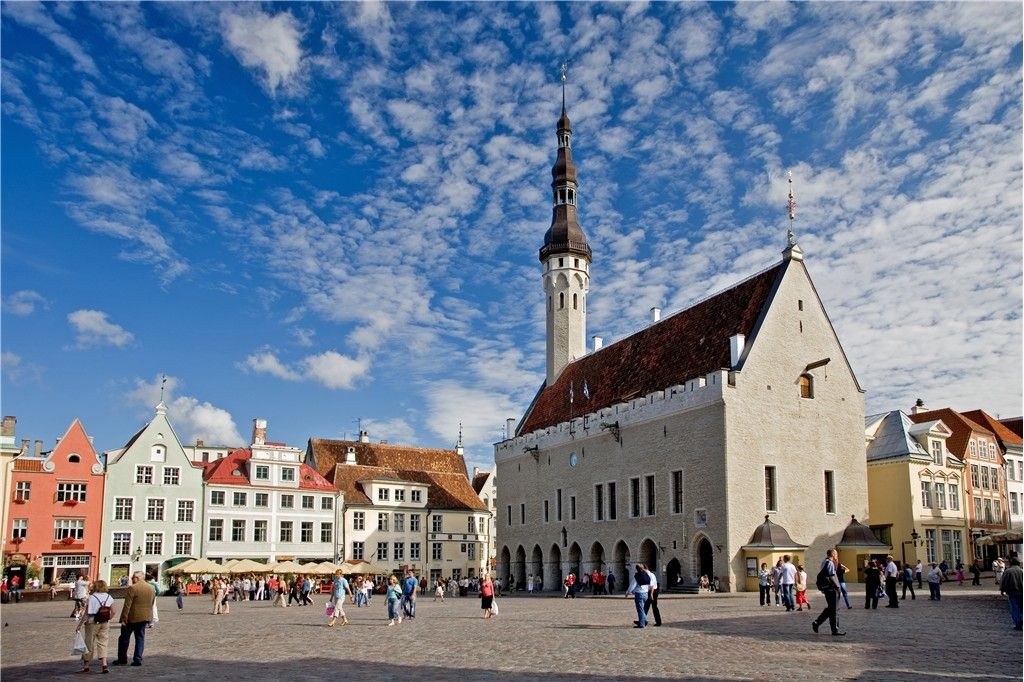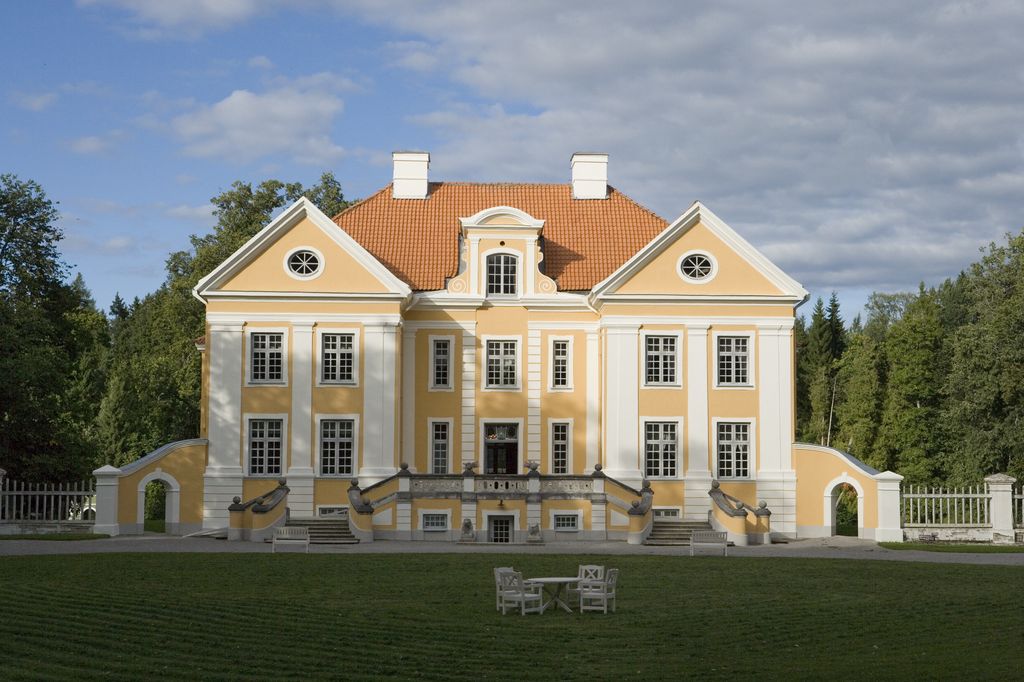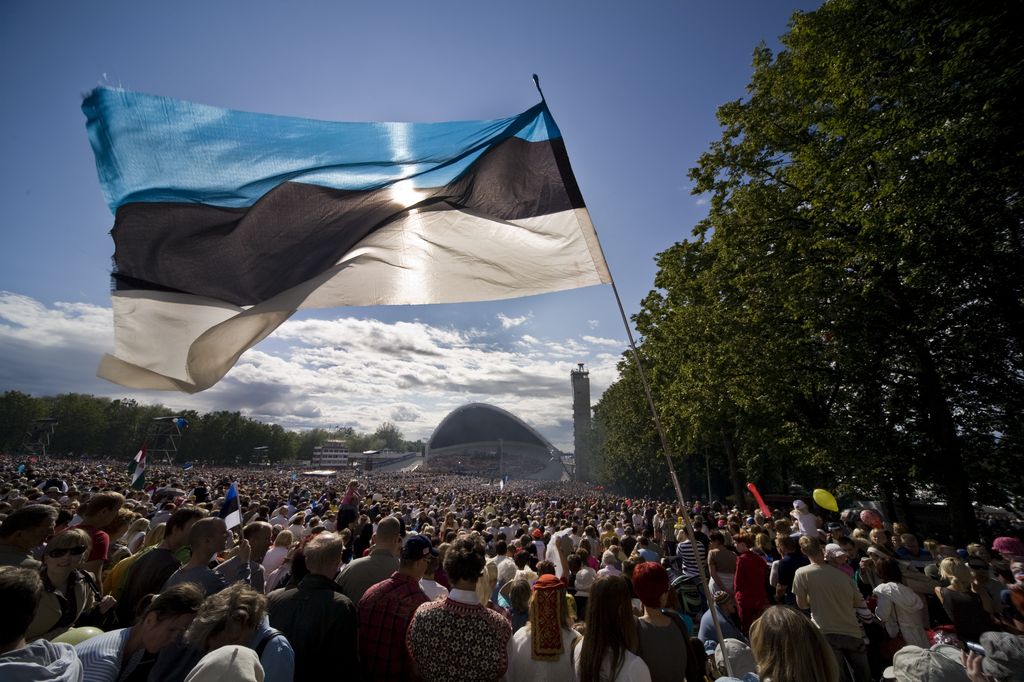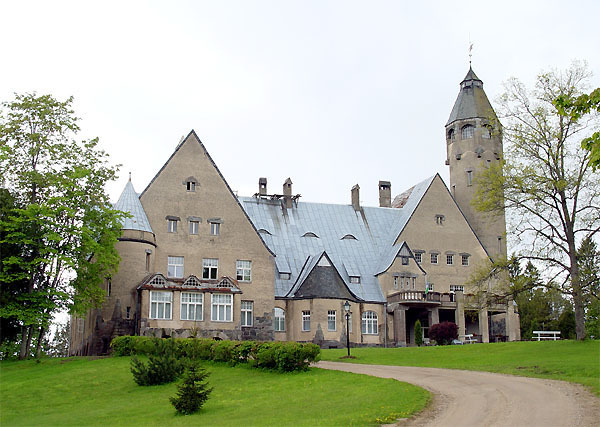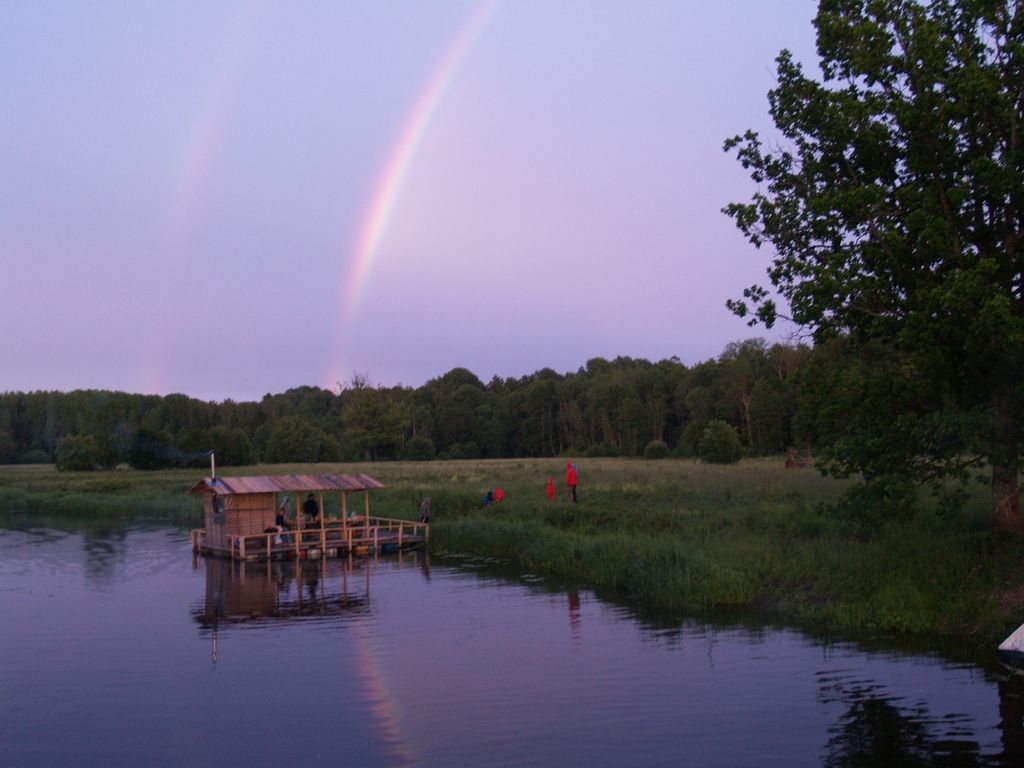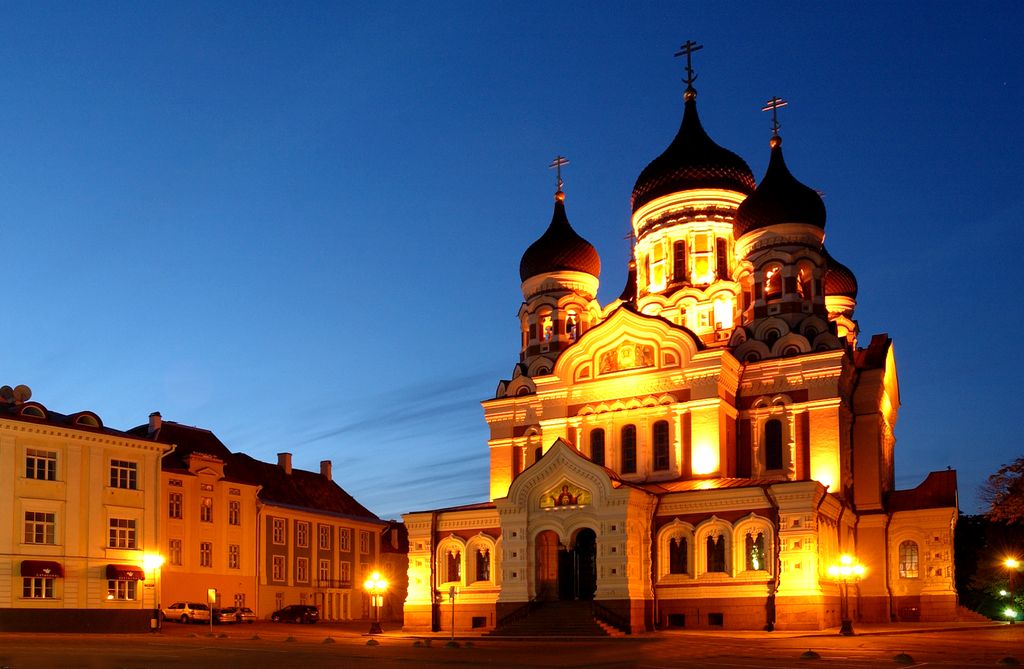Estonia is a dreamland for nature lovers. This is the place where the land meets the sea, bogs are interspersed with virgin forest, fields and rivers and lakes. Estonia might easily be called the kingdom of bogs since approximately one quarter of the country is covered in marshes. From any point on Estonia’s mainland, the nearest marsh is al-ways less than 10 km away.
Altogether, five national parks and hundreds of other preserves have been established to maintain nature’s unique value. Estonia is considered one of the world’s best bird-watching destinations due to its prime fly-way location. We have low human population, empty roads and good infrastructure. It should be also noted that Estonia’s low population density offers nature-loving adventurers plenty of space to themselves. The mobile telephone and internet reception found all over the country enables communication with the rest of the world in the most remote locations: isolated beaches or deep in the forest.
Our nature offers yearlong opportunity for nature watching. Temperate climate rules here between the continental and maritime climate, a diagonal line between the limestone-base and the slightly poorer sandstone, in addition we also lie on the Southern border of the coniferous forest zone.
Estonia has untouched beaches, more than 1,000 small islands, heritage landscapes, primeval forests, swamps, bogs, winding rivers with natural riverbeds which are all habitats for many rare species of animals and birds.
Estonia is situated on the East-Atlantic migratory path of Arctic waterfowls, every year millions of waterfowls travel through our coastal waters. What is more, our western taiga forests are especially rich in species. Estonia is, for example, one of the few countries in Europe where it is possible to observe eight different species of woodpeckers. In addition to that, you can meet a lot of galliformes here e.g. the Hazel Grouse, the Capercaillie, and the Grouse.
A lot of such species that cannot be found anywhere else still inhabit our forests. For example, the flying squirrel who can only be seen in Estonia and Sweden. Our forests are made even more fascinating by the mammals living here e.g. lynx, wolf and bear. The lynx and the wolf can be seen during any season but the best period for bear, beaver and elk-watching is from April to September.
Our coastal and wooded meadows are no less important than the forests. It is common to see such plants in these places that have become extinct or rare in the rest of Europe. For example, 76 species of vascular plants were counted in the summer of 2000 on the wooded meadow of Laelatu. This makes Laelatu special in the whole world and it is also a record in North-Europe.
Several good reasons to visit Estonian nature:
- Estonia’s population of wolves and lynxes is one of the strongest in the world.
- Estonia has the world’s leading role in organising the protection and restoring of the European mink
- We have 3-5 times more bears per km2 than our neighbouring countries.
- About 10 per cent of the whole Common Crane population in Europe visit Estonia every autumn.
- Black Stork, Hazel Grouse, Capercaillie and Nutcracker. 40,000 pairs Hazel Grouse nesting here
- Brown bears, wolves, lynxes, European beavers and flying squirrel
- Flocks of Steller´s Eider
- 8 species of woodpeckers
- Compared with Poland, four times as many Ural Owls and six times as many White-backed Woodpeckers breed in Estonia.
- More White-backed Woodpeckers may nest in one national park in Estonia than in the whole of Sweden!
- Atmospheric pine forests – habitats to Ural and Pygmy Owls
- 36 species of Orchids have been found in Estonia
- Estonian flora is comprised of about 550 species of mosses, 1,440 species of vascular plants, 3,000 species of algae and 800 species of lichens
- Wonderful network of unspoilt wetland habitats, a lot of open space and silence
- Massive assemblies of migrating waterbirds from the Arctic – in May 1997 in a single day one million passing arctic waterfowls were counted at Cape Põõsaspea.
- “International Crane Assembly“
- In Estonia you can find about 900 large butterfly species, over 1000 small butterfly species and more than 50 kinds of dragonflies.
Some examples of what makes Estonia special
Forests
Forests and woodlands cover almost half of the Estonian territory which ranks us 4th in Europe in that category. An admirable seventeen per cent of the country is afforded protection within nature reserves that vary in size from the large national parks to the smaller, locally protected reserves. About 75% of all plant species in Estonia are found on the west coast because the climate is more moderate there. In many locations in Estonia, for example, on Hiiumaa Island and in the North-East, large tracks of primeval forests that once covered Europe have been preserved. The most common tree in Estonian woods is Scots pine followed by birches, Norway spruce, alders and aspen.
In addition to Norway spruce, valuable broad-leaved trees such as the English oak, European ash, mountain elm and Norway maple grow there with a species-rich undergrowth formed by hazel, fly honeysuckle and mountain currant.
One of the most important and endangered type of forests in Estonia is western taiga. Western taiga is a complex forest habitat type, ranging from dry pine forest (Pinus sylvestris) to damp spruce forests (Picea abies). Some stands in such forests may be quite young, having regenerated after a forest fire that may have occured over a hundred years ago. Others will be significantly more mature. In all cases, natural undisturbed western taiga is extremely rich, providing habitats for many threatened species. Besides Estonia, western taiga forests in Europe can only be found in Sweden, Finland, Russia and to a small extent in Lithuania.
Birds
Millions of birds stop in Estonia on their migratory paths. Estonia is a paradise for birders. Although not widely discovered yet, Estonia is an ideal country for observing massive bird migration. Estonian bird fauna consists of approximately 340 natural species: over 200 are nesting birds, around 30 are migrating birds and about 70 are occasional visitors. Many birds are found on small islands where there are up to 13,000 nesting couples per square kilometre. Altogether eleven sites in Estonia have been included in the Ramsar list of internationally important bird areas.
Birds can be watched all year long in Estonia. Local birdwatchers’ favourite time is the beginning of spring. Birdwatchers coming from abroad can also be guaranteed of an amazing experience at that time.
From April to May massive arctic waterfowl migration begins
During that period we can see here internationally important numbers of Red-throated and Black-throated Divers, Bewick’s Swans, Greater White-fronted Geese, Greater Scaup, Common and Velvet Scoters and Long-tailed, Whooper Swans.
The Gulf of Finland, the Eastern coast of the Baltic Sea, Lake Peipsi near the Russian border, the Estonian inland waters and coastline are for millions of Arctic waterbirds natural stepping-stones along the main route between the breeding and wintering areas. Our natural areas are crucial feeding and stopover sites for these birds. In some years 300 000 Barnacle Geese are estimated to pass through.
From May to June it is the best time to observe: Great Snipe, Black Stork, Lesser Spotted Eagle and Corncrake
During that period the Great Snipes can be seen on the meadows after sunset. This is a breeding species for which Estonia is internationally important. Up to 600 males have been estimated. Also other rare species in Western Europe are more easily observed at that time. We have mires, bogs, primeval forests, vast floodplains. These are habitats for many species of breeding birds.
At that time we can also meet White-tailed and Lesser Spotted Eagles, Honey Buzzards and Montagu`s Harriers, Greenish, Blyth´s Reed and Barred Warbler, Penduline Tits, Citrine Wagtails and Scarlet Rose Finch. Concerts are often given by the European Nightjar, Marsh Warblers or Corncrakes´crex-crex can be heard from dusk till dawn. It is also possible to see and heard Savi´s Warblers, Booted Warblers and Black Stork.
From September to October – Massive arctic waterfowl migration in autumn
The last week of September is the best time for autumn migration. This is the ideal time for birdwatchers who wish to see forest birds, raptorial birds, Eastern rarities and Arctic migration all at once. There is always a chance to see the rare White-billed Diver or the Grey Phalarope during that time. The Common Chaffinch, Brambling floks, Goldcrests, Long-tailed and Willow Tits, Common Starlings, thousands of ducks, teese, Red-throated Diver, Greater Scaup, Barnacle and Bent Geese and Velvet Scoter also pass through at this time.
Matsalu National Park is well-known as one of the most important crane concentration areas in autumn. Thousands of birds gather around the bay before moving to their wintering grounds in Spain and North-Africa or Algeria and Tunisia.
Winter (from January to mid-April) is the time to observe the Steller´s Eider – the most endangered seaduck in Europe
The best time to observe Steller`s Eider is in January and February when congregations may reach 1000 birds or even more. They arrive here in December and leave in April. Saaremaa, the biggest island in Estonia, has the Steller’s Eider’s wintering grounds in the Baltic Sea. Steller’s Eider can also be seen at the most northeastern point in mainland, the Cape Põõsaspea (Spitham). As it is unfrozen you can also see thousands of Long-tailed Ducks, Goldeneyes, Goosanders and often White-tailed Eagles nearby. At that time it is possible to see the tit, Willow Tit, Goldcrest, Hazel Grouse and Black Woodpecker in Estonian forests. There is always a chance to see owls also during the daytime but that only in case the number of rodents is small.
From mid- March to April it is possible to observe the Nutcracker, Three-toed, White-backed and Grey-headed Woodpecker, Capercaillie, Ural and Pygmy Owls, Hazel Grouse.
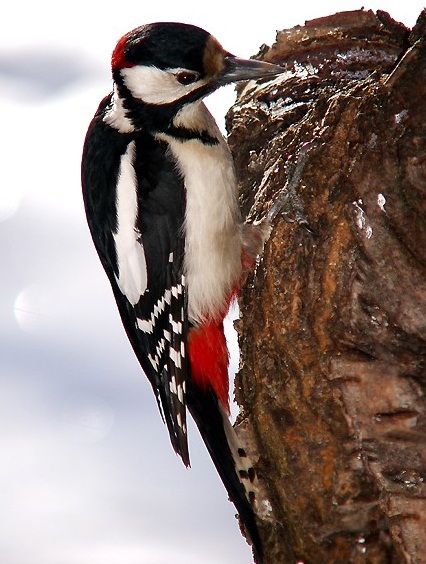 All Estonians look forward to the beginning of spring and the birdsong that starts ringing in Estonians’ ears at that time together with the first rays of spring sun is so therapeutic that each and every birdwatcher has to experience it too. It might seem unbelievable but in some mornings it is possible to see even six different woodpeckers. Capercaillies and also Black Grouses become very active at sunrise. You can hear the calls of Ural, Pygmy and Tengmal`s Owls in the forests. Hazel Grouse be seen in forested areas. There are thousands of Whooper and Bewick´s Swans and different duck species, thousands of geese gather on the fields. April is the last chance to observe Steller`s Eiders in Estonia.
All Estonians look forward to the beginning of spring and the birdsong that starts ringing in Estonians’ ears at that time together with the first rays of spring sun is so therapeutic that each and every birdwatcher has to experience it too. It might seem unbelievable but in some mornings it is possible to see even six different woodpeckers. Capercaillies and also Black Grouses become very active at sunrise. You can hear the calls of Ural, Pygmy and Tengmal`s Owls in the forests. Hazel Grouse be seen in forested areas. There are thousands of Whooper and Bewick´s Swans and different duck species, thousands of geese gather on the fields. April is the last chance to observe Steller`s Eiders in Estonia.
Butterflies & Dragonflies
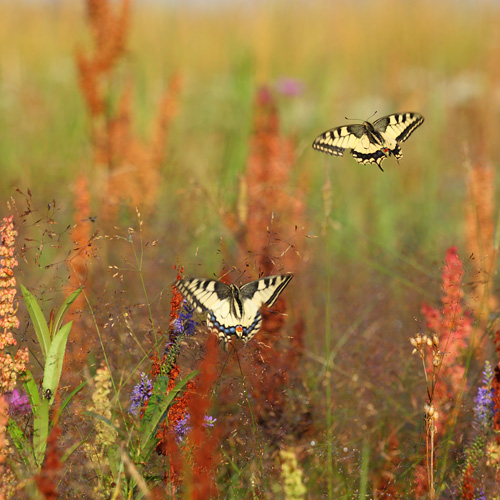 Despite its small surface area Estonia has a huge amount of different butterfly, moth and also dragonfly species. Thanks to our untouched nature we have places that have been completely intact for more than 50 years. These areas are the favourite places for butterflies. Every year also new species are discovered. A large number of flowery meadows, natural forests and massive bog areas are the habitats for dragonflies and butterflies. Thanks to having such favourable habitats for butterflies and dragonflies we have different species that are very rare in the rest of Europe e.g. Clouded Apollo, Moor-land Clouded Yellow, Large Copper, Siberian Winter Damsel and Lilypad Whiteface in addition also dragonflies like Bog Hawker and Arctic Bluet, dragonflies such as Ruby, Yellow-spotted and Dark Whitefaces as well as the coastal Baltic Hawker etc.
Despite its small surface area Estonia has a huge amount of different butterfly, moth and also dragonfly species. Thanks to our untouched nature we have places that have been completely intact for more than 50 years. These areas are the favourite places for butterflies. Every year also new species are discovered. A large number of flowery meadows, natural forests and massive bog areas are the habitats for dragonflies and butterflies. Thanks to having such favourable habitats for butterflies and dragonflies we have different species that are very rare in the rest of Europe e.g. Clouded Apollo, Moor-land Clouded Yellow, Large Copper, Siberian Winter Damsel and Lilypad Whiteface in addition also dragonflies like Bog Hawker and Arctic Bluet, dragonflies such as Ruby, Yellow-spotted and Dark Whitefaces as well as the coastal Baltic Hawker etc.
In Estonia you can find about 900 large butterfly species, over 1000 small butterfly species and more than 50 kinds of dragonflies.
The first butterflies become active already in March and April, e.g. Brimstone, Small Tortoiseshell and Cam-berwell Beauty. The species are most active in summer. In June and August such eye-catching species are active like Swallowtail also Purple and Lesser Purple Emperors, Chestnut Heath, Scarce Fritillary and Northern Wall Brown. Several rare dragonfly species can be found until late October if the weather is suitable.
Wild Animals
There is no many places in Europe where you could see all this wild bears, wolves, lynxes and flying squirrels. There are currently 65 different species of mammals living in Estonian forests, among them 500–600 brown bears, over 150 wolves, around 700–800 lynxes, 20,000 beavers, 20,000 wild boars, 12,000 elk plus deer and other wild animals . The most endangered example is the European mink, several species of dormouse and the flying squirrel. A species typical of taiga forests, the flying squirrel, still survives here but it is extremely rare. Discover the wolf, lynx and bear habitats in Alutaguse. The biggest forest area in Estonia, situated in the Northeast of the country, close to the Russian border. Estonian forests and woodlands are well-known in Europe for the number of mammals living there. There are 3–4 times more bears per square kilometre living here than in Finland.
Bears hibernate from mid-November until the end of March. The best time to go bear-watching and to take photos at the feeding station is from May until mid-July when the nights are white. In August and September, bears can find enough food themselves and will not come to the feeding station. They come to the feeding station again in September and October to gather strength for hibernating.
Wild Boars are regularly provided with food by hunters throughout the year. Therefore it is quite easy to watch them before sunset at the feeding sites. The boars who usually live alone, join the sounder during mating season when angry fights take place and the weaker are pushed aside. The winner will impregnate all the sows of the sounder. Maturity is achieved early, in favourable conditions also piglets may be impregnated. The piglets are born in the period from March until May. In autumn, piglets make up more than 50% of the population. The wild boar arrived in Estonia in the 1920s. Nowadays it has spread all over the country.
The best time for Elk-watching is definitely September and October during the mating season. Another good period is April when the calves from the previous year will be evicted by adults before the next generation is born. Males fight each other for the right of being the leading male. The leading male can inseminate up to seven females during the mating season. The natural enemies of the Moose are wolf and bear.
Although Estonia has a remarkable amount of different animals, many factors have to be taken into account in order to see them. It is not always easy to see them but together with a naturalist guide you can get an unforgettable experience and see elks, wild boars, bears, etc. who are all very rare in the rest of Europe.
Siberian flying squirrel
The best time to observe flying squirrels are from May to early August when the white nights give better opportunities to see this nocturnal mammal. In Europe they can only be found in Estonia and Finland.
The flying squirrel has a unique appearance. It has big eyes and there is a fold of skin between the fore- and hindlimbs. Big eyes are useful for seeing in the dark at night because the flying squirrel is active mainly at nights. The flying squirrel does not actually fly but glides: jumping into the air it stretches the fold of skin between its limbs and then glides for about twenty meters or so. It guides its flight with its tail. Before landing on the tree, it brakes by bending the tail down. After landing on the tree it runs straight to the other side of the tree to escape possible trackers. It has a lot of enemies, e.g. the martens, the strixes, etc.
The flying squirrel lives almost all of its life on top of trees, coming to the ground only in case of extreme need. As a shelter it prefers a forest with old trees that has many tree hollows where to build its nest. The flying squirrel eats the buds of trees, young branches, seeds, etc. It also gathers food supplies for winter to survive the cold period.
NB! As flying squirrels are endangered, their observation and being near to their habitats is only allowed with a local expert.
The wolf has a strong sense of smell and hearing, they also see better than other canines.
The wolf is mainly a nocturnal animal, its regime may vary depending on the habitat and season.
Wolves live in their different periods of life either in a pack or as couples. They move in packs from autumn to spring. The pack is formed from an old male wolf and female wolf and their cubs from past year and current year. The female is the leader of the pack. In the winter family packs can form also bigger joint packs.
In the summer wolves which are raising their cubs usually live in pairs. Outcast animals or also some occasional ’rebellious’ young males can also live alone. The power hierarchy plays an important role in case of wolves and the position of every animal in the pack is determined already in early age. The howling of the wolf can be heard especially well in January and February. The wolf is a monogamous animal, the couples that are formed last until the end of their lives. The couple also takes care of the cubs together. Estonia has been a home for wolves already for more than 10,000 years. In recent years the population of wolves has increased. Hunters have not managed to use all the hunting permits issued by the government because it is difficult to hunt wolves. This is good in some respects because due to that the wolf population will grow even more. But it is not good news for sheep farmers who complain about the damage caused by the wolves.
February and March are good months for observing lynx
Meeting the lynx is never very easy as their territory may extend up to 200 square kilometres. In addition, it has a hidden way of life and moves mainly at nightfall and at night. In winter it is easy to examine its activity based on its footprints. The lynx searches for food early in the morning and in the evening, at night it rests. The lynxes, just like other predators, do not hunt for strong healthy animals. Wolf is the biggest competitor for the lynx when it comes to diet. Wolves’ habitat is bigger than the lynxes’ and more even. Where there are a lot of wolves, there are few lynxes. The lynxes prefer to always use the same tracks and to hunt in a specific area. Although the lynx is a good climber, it prowls for its prey on the ground. They lynx is a big animal that can weigh up to 25 kg.
Even though one male has many ’wives’, the father takes part in raising the cubs and teaches, feeds and grooms them sometimes. Lynx cubs stay with their mother for several years, they only part due to food shortage.
The lynx used to be widespread all over the Northern hemisphere but by now they have been destroyed by man in many European countries. There are still plenty of lynxes left in Estonia (almost a thousand) and because of that it is even allowed to hunt them. Together with an experienced game warden and with good luck it is possible to also see the lynx.
There are about 20,000 beavers and 2000 otters in Estonia – all this in such a small territory
Spotting beavers is not too difficult in favourable weather conditions, but during storms and heavy rain they may retreat into their lodges for many days. The best time for beaver watching is from April to August.
The beavers have a semi-aquatic way of life. They build their home on the shores of a lake or a river. The colour of their fur varies from light brown to black. Its flat tail that seems to be crushed flat from the top is covered in scales. The beaver uses its tail in the water as a steering wheel, sometimes also as a paddle and to give signals by slapping the water with its tail. Sometimes older beavers give their offspring a ride on the tail. Beaver fur is impermeable. It consists of a very thick and soft underfur that is covered with a more coarse and longer outer fur in such way that water cannot get through it. The beaver’s chewing activity is amazing. With its powerful front teeth it can fell trees with a diameter up to one meter. Beavers work only at night. They are monogamous and the couples are formed for life.
The raccoon dog – On the outside it resembles the racoon, especially in the face. Raccoon dogs are omnivores, their food list includes different insects, fish, rodents, etc. The Raccoon dog, who eats plants, animals and birds can influence and also limit the growth of bird species living on the ground. Raccoon dogs hibernate which is unique for canines.
Since the population has increased rapidly they are now widespread all over the country although there is very little precise information about the present distribution or exact numbers. To keep the population of raccoon dogs under control, the Estonian Environmental Board has begun to prepare a management plan for that.
The European mink – The mink has been given the highest level of protection status in Estonia and is our rarest mammal. Since 2000 mink has been repopulated to the island of Hiiumaa where there are about 25 animals living in the wild. Tallinn Zoological Gardens takes care of the reproduction of the minks for their repopulation into the wild. The mink chooses the shores of fast-flowing rivers or streams with clear water for its habitat. It nests in tree hollows where the exit might lead underwater.
The minks live alone and are nocturnal. The female European mink can be impregnated also by a male of different species. In that case the foetuses die before birth. The negative aspect of this is that the female does not contribute to the reproduction of the species that year. This is also considered to be one of the reasons why the mink is becoming extinct.
Wildflowers
The border-line between the East and Middle European biogeographic provinces runs through Estonia. This is reflected in the composition of the flora and supported by the fact that 538 species or subspecies of vascular plants (35% of the total number of taxa) reach the border of their distribution area here. The majority of such species reach their area’s northern, northeastern or eastern border in Estonia (for instance the meadow sword lily, the Siberian iris, the short-spurred fragrant orchid, the long-leaved and red helleborines, the ivy, and the blackthorn) which provides evidence to the fact that most of Estonia’s flora originates in Europe. However, there are also species that grow on the western, northwestern or southern border of their area here (e.g. the blunt-leaved sandwort, the Siberian iris, the Arctic bramble).
Species that reach the border of their distribution area in Estonia have spread into the country during different climatic periods and are thus regarded as relics of the relevant periods. Several plant species that are unique to the country have developed here and cannot be found elsewhere in the world. Well-known among these is the Saaremaa yellow rattle and the lesser-known Estonian saw-wort. Altogether, 83 endemic taxa have been identified in Estonia, most of them being small species of the hawkweed genus. The indigenous flora has gradually been supplemented by many species whose spreading is facilitated by human activity. As a result of agricultural activities in particular and also of transport of goods, numerous weed species have spread here as late adventives, while several meadow plants (such as the tall buttercup, the tufted hair grass and the ox-eyed daisy) settled in Estonia much earlier. Of lower plants, more than 2,500 species of algae and 680 species of lichens have been found in Estonia. According to the latest data, 1,441 species of vascular plants are represented in the flora of Estonia. Including subspecies, the total number reaches 1,538.
In late March or April , even before the snow has ultimately melted, the first harbingers-of-spring may be found, such as Mezereon, Liverleaf, Wood Anemone and Yellow Wood, Fumeworts, Wonder Violet, Common Dog-violet, Cowslip, Dwarf Milkwort and conspicuous Spring Vetchling, Marsh Marigold and Cuckoo Flower, Toothwort flower, Ramsons. In dry calcareous meadows we can see Cat’s Foot, Pygmyfl ower Rockjasmine, Kidney Vetch and Small Pasque Flower, Bird’s Eye Primroses and Globe Flowers.
In May it is possible to already see some orchids. The flowers that sprout then are e.g. Military Orchid, Early Purple Orchid, Sword-leaved Helleborine, Fly Orchid, Lady’s Slip-per, Common Twayblade, Lesser Twayblade, Garlic Mustard, Perennial Honesty. In raised bogs Bog Rosemary, Labrador Tea and Cranberry are in full blossom.
June and July are the high peak of plants! Nature blooms in its full glory and it is possible to see they beauty of such species as e.g. Bloody Cranesbill, Mountain Clover, Northern Bed-straw, Dropwort, Small Scabious, Hoary Plantain, Common Spotted Orchid, Early Marsh Orchid, Fragrant Orchid. The coasts are made brighter by Swallow Wort, Herb Robert, Woolly Milk Vetch. The meadows are dressed in their best garment by Danzig Vetch, Smooth Tare, Wood Vetch. From orchids it is possible to see also Marsh Helleborine, Broad-leaved Helleborine, Dark-red Helle-borine, Musk Orchid and Bog Twayblade. The forests are decorated by Twinflower, Green-flowered Wintergreen and One- flowered Wintergreen. Bogs are adorned by Cloudberry, Bladderwort, Sundew, Common and Alpine Butterwort.
1,500+ islands
Most are tiny but the inhabited ones offer beautiful, peaceful and friendly atmosphere and a traditional culture that opens a window on how Estonians used to live. The Estonian islands are well known worldwide for their authentic historic Viking and islander-culture, their traditional way of life and breathtaking scenery. However, travelling to the Estonian islands may require a little bit of planning.
Bogs and swamps
Taking into account the percentage swamps take up of the whole surface area of a country, Estonia has the second place in the world, preceded only by Finland and followed by Canada. So swamps can be said to be the wealth of Estonia. That also because many countries in Central Europe have almost completely destroyed their swamps and are now working hard to restore them.
A big part of Estonian swamps is under nature protection nowadays. Peatlands are the typical habitats in Estonia and occupy approximately one fourth of the territory. A lot of swamps and bogs have been drained in earlier decades to get arable land and also to get peat bog but some wetlands have still been left untouched.
As Estonian landscape is flat, wetlands reach everywhere. In Estonia there are more than 165,000 swamps the size of which surpasses one hectare. 132 of them are peatlands bigger than 1000 hectares. About 7000 bogs cover 22.3% of Estonian mainland. Bigger percentage of peatlands can only be found in Finland. Some bogs are more than 10,000 years old. Most of Estonian bogs started as lakes that about 6,500 years ago gradually turned into muddy pools because of the spread of coastal vegetation. Some bogs have been created as a result of an opposite process – the rise of groundwater and the soaking of land rich in minerals. All today’s Estonian peatlands have formed after the last ice age.
Bogs create one of the most interesting habitats for birds, especially for tundra species like the European Golden Plover and the Whimbrel. Many birds such as the Golden Plover, Whimbrel, Great Grey Shrike and Parrot Crossbill also nest in Estonian bogs. Bogs also provide a habitat for large carnivores and you can also find dragonflies and butterflies there that are extremely rare in Europe. Bog Birches and plants belonging to the Rubus family are most common from forest and tundra vegetation in Estonian bogs. About half of Estonian plant species grow in bogs. Estonian bogs are excellent for hiking and picking berries but can also be dangerous for the less experienced. Never hike alone in the bog and always consider using a tour guide. The best possibility for visiting a bog is in Soomaa National Park where half of the territory is bog. The peat layer there is up to 7 meters thick at places. The deepest peat layer (17 meters) is in the South-East of Estonia in Vällamäe bog. Such swamps cannot be found anywhere else in Europe.
Meadows and alvar grasslands
Alvars are common in the western and northern parts of Estonia. They are located on limestone and have a thin but nutrient-rich layer of soil. They are known as pastures and for junipers that grow there. Vegetation on alvars is mostly low-growing but colourful and rich in species. The Estonian alvar grasslands are habitats for several less widespread species. Some of them are incomers from steppes, others are relics from earlier tundra period. Some of the most interesting species are Carline Thistle, Rock Wormwood, Hutchinsia, Alpine Mouse-ear Chickweed, Alpine Meadowgrass, Fragaria viridis, Dyer’s Woodruff, Snowdrop Anemone, etc. Also, alvars are especially favourable habitats for mosses and lichens. Estonian wooded meadows are among the most species-rich plant communities in the world. For example, it has been counted that the Western-Estonian wooded meadow at Laelatu has 76 different vascular plants in one square meter. South Sweden is the only other place in the world where one can see alvar grasslands.
Beautiful coastal meadows in West Estonia. The most interesting species here are Sea-Pea, Prickly Saltwort, Sea-Holly, Spurious Butterbur, Sea-Kale and Woad. Our coastal meadows are important for migratory birds. Many of the coastal breeding bird species such as the Avocet, the Black-tailed Godwit and the Dunlin have become rare in the Baltic Sea region due to the substantial decrease of the area of coastal meadows.
Deserted Beaches
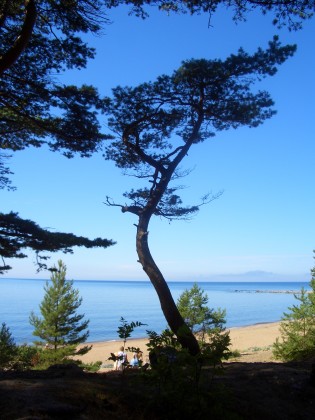 Estonia’s coastline has hundreds of deserted beaches. Even in the height of summer you can find private space for yourself. The beach season in Estonia lasts from June to September.
Estonia’s coastline has hundreds of deserted beaches. Even in the height of summer you can find private space for yourself. The beach season in Estonia lasts from June to September.
In July and August the beaches are full of sunbathers and Pärnu, Estonia’s summer capital, is the main attraction. Most of the public beaches are sandy and the average water temperature is 18°C. Inland waters and some shallow bays are even warmer and are ideal for families with children. Estonia’s islands offer quite a different beach experience with their mostly untouched nature and remoter rustic feel. If you are looking for a new experience, then try swimming in bogs where the water is, surprisingly, incredibly clean. Limo beach on Ruhnu Island is called a beach with “singing sand” and it is considered to be the most beautiful beach in Estonia.
The 5th Season
A natural phenomenon occurs in Soomaa National Park in spring if the snow melts fast enough: the whole area gets flooded and people have to travel around by boat. The time of early spring floods is known as the fifth season in the Riisa Village in Soomaa. There isn’t enough room in the river basins of the Rivers Halliste, Raudna and their tributaries for the water from the melting snow and so it floods the floodplain meadows and even the floodplain forests. This is an interesting time, the beginning of the water hiking season when you can go about canoeing in the forest. The biggest floods are in late March and early April.
Flooded meadows are important feeding and nesting habitats for such interesting birds as the Ruff, the Great Snipe, the Lesser Spotted Eagle and the Black Stork.
Ice Roads (longest in Europe)
Believe it or not, in deep winter the Baltic Sea freezes and ice roads are created between the mainland and the islands. Driving on the frozen sea is unforgettable. The Estonian Road Administration is responsible for managing ice roads in winter. An ice road can be opened when ice thickness is at least 22 cm (8.7 in) along the entire route. An ice road to Piirissaar Island in Lake Peipus is opened in most years, while colder winters allow official ice roads to be opened on the Baltic Sea between mainland Estonia and the islands of Hiiumaa, Vormsi, Muhu and Kihnu, between the islands of Saaremaa and Hiiumaa and also between Haapsalu and Noarootsi. As of 2011, the longest ice road in Europe is the 26.5 km route between Rohuküla on the continent and Heltermaa in Hiiumaa.
Medieval Old Town Tallinn
It’s impossible to deny that this is the main reason most people first come to Estonia – to see the best protected and intact medieval city in Europe. Spend a day in a true medieval milieu and you will soon understand why so many have described Tallinn Old Town as mystic, addictive and mesmerizing. Unlike other capital cities in Europe, Tallinn has managed to preserve the completeness and structure of its medieval and Hanseatic origin. Most of the cobblestone streets and properties, important state and church buildings, citizens’ and merchants’ residences, barns and warehouses dating back to as far as the 11th century, are preserved in their original form. In 1997, Tallinn Old Town became a UNESCO World Cultural Heritage site and is often referred to as the “medieval gem of Europe”.
Manor Houses
Luxurious manor houses, built over the centuries, are open for visitors and many have also been converted to high-class hotels. Experience the fascinating world of kings, czars, counts and dukes and enter the fairy tale of manor houses and castles in Estonia. Scandinavian kings, the Russian Empire and Teutonic Knights have left Estonia with unique and versatile landmarks of historic luxury.
Folklore
Estonia is second only to Ireland in Europe when it comes to folklore history, stories, legends and songs. Estonians have inherited a large collection of distinctively structured verse songs from the animism era. Most of Estonia’s heritage is preserved through old folk songs and legends that were “sung down” (rather than handed down) from generation to generation. New national composers and writers have created their works based on those findings, among them Eevald Aav, Eugen and Villem Kapp composing operas about national heroes. Eduard Tubin created the ballet “Kratt” and various symphonies.
The Estonian Song Festival
First held in 1869, the Song Festival takes place every five years. In 2009, 26,000+ choral singers gathered to perform for an audience of 80,000 people. It is recognised by UNESCO as a Masterpiece of the Oral and Intangible Heritage of Humanity.
Castles
Restored or in ruins, there are medieval castles not just in Tallinn but across the country.
Saunas
When it’s snowing take a hot log sauna, beat yourself (or a friend) with a birch branch and then roll around in the snow. It’s fun. Really.
Ghosts and Legends
Estonia has its fair share of spooky and supernatural happenings. The Old Town of Tallinn, for example, is full of stories and strange experiences.
Swedish, German and Russian History
Estonia has been occupied by Russians, Swedes and Germans. Each has left their mark on our landscapes and culture. Whether right or wrong, they have still helped to define who we are.
Small size
Size is everything. Estonia is small. Distances are short and travel is cheap. It means you can squeeze in lots of sightseeing and activities in a relatively short period of time.
Characterisation of Estonia
The Republic of Estonia is a country in the North Europe. Estonia boarders in the North across the Gulf of Finland with the Republic of Finland, in the West across the Baltic Sea with the Kingdom of Sweden, in the South with the Republic of Latvia, and in the East with the Russian Federation. The area of Estonia is currently 45,227 square kilometres. The territory of the Republic of Estonia before World War II was larger than it is now. The territory of Estonia has in a more distant history been a part of the territory of Livonia and has been under the control of the Danish, Swedish, German and Russian monarchies. Estonia’s rich history is another important reason for visiting it.
Nowadays Estonia is a democratic parliamentary republic. The biggest city is Tallinn, the capital of Estonia. Estonia has one of the smallest populations in the European Union – 1.34 million. Estonia belonged to the League of Nations since 22nd September 1921 and belongs to the United Nations since 17th September 1991, to the European Union since 1st May 2004, to NATO since 29th March 2004, to OECD since 9th December 2010 and to the Eurozone since 1st January 2011. The official currency in Estonia is euro. Estonia has signed the Kyōto Protocol that is connected to protecting the environment.
FACTS ON ESTONIA
Official name: Republic of Estonia
Official language: Estonian
Capital: Tallinn
Area: 45,227 sq km
Coastline: 3,794 km
Member of EU: since 1st May 2004
Population: 1,340,100 (January 2011)
Population density: 29.6 inhabitants per sq km
Currency: EUR (since 1st January 2011)
Time zone: EET (UTC+2)
International calling code: +372
Medical care and emergency: 112

